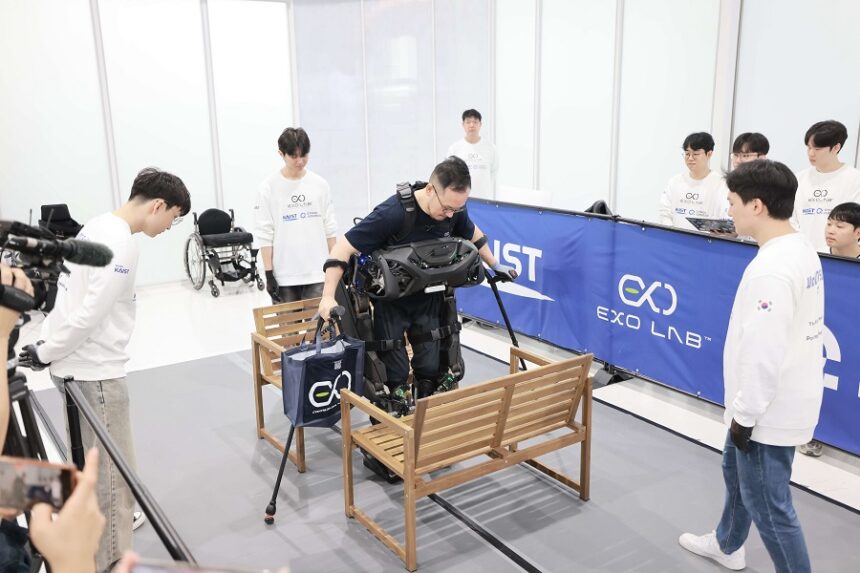Researchers have developed a new wearable robot for completely paralysed persons that can walk to them so that the user can wear it right out of their wheelchairs without help from others.
The wearable robot, WalkON Suit F1, was developed by researchers from The Korea Advanced Institute of Science and Technology (KAIST).
Also Read: New AI tool to detect early signs of depression in elders using voice
This robot is designed for individuals with paraplegic disabilities. The research team has been conducting studies since 2015.
This robot aims to assist persons with the American Spinal Injury Association (ASIA) Impairment Scale – A (complete paralysis) grade injury, the most severe level of paraplegia, the researchers mentioned.
“WalkON Suit is the culmination of wearable robot technology for the disabled,” said Professor Kyoungchul Kong of KAIST Department of Mechanical Engineering.
“The numerous components, control, and module technologies derived from WalkON Suit are setting the standard for the entire wearable robot industry,” he added.
Professor Kong’s research team first unveiled the ‘WalkON Suit 1’ in 2016.
They later introduced the WalkON Suit 4 in 2020, which increased walking speed to 3.2 km/h, matching the normal walking speed of individuals without disabilities.
This model also demonstrated the capability to navigate obstacles commonly encountered in daily life, such as narrow passages, doorways, and stairs.
However, the WalkON Suit still faced the same fundamental issue that all wearable robots encounter: it requires assistance from others to be put on.
While users can walk independently once the suit is worn, they need someone to help them get into it initially, the researchers mentioned.
The newly released WalkON Suit F1 offers a technical solution to a fundamental problem.
It uses a frontal-docking method rather than a rear-entry method, allowing users to put on the robot without having to transfer from their wheelchair. This design eliminates the need for assistance during the transition.
Additionally, before being worn by the user, the robot can walk autonomously like a humanoid.
It has a feature that actively controls its centre of weight to counteract gravity, allowing it to maintain balance and prevent falling, even if the user pushes it, the researchers noted.
Moreover, the robot comes installed with a ‘visual recognition system’ for obstacle detection and an AI board for neural network application.

